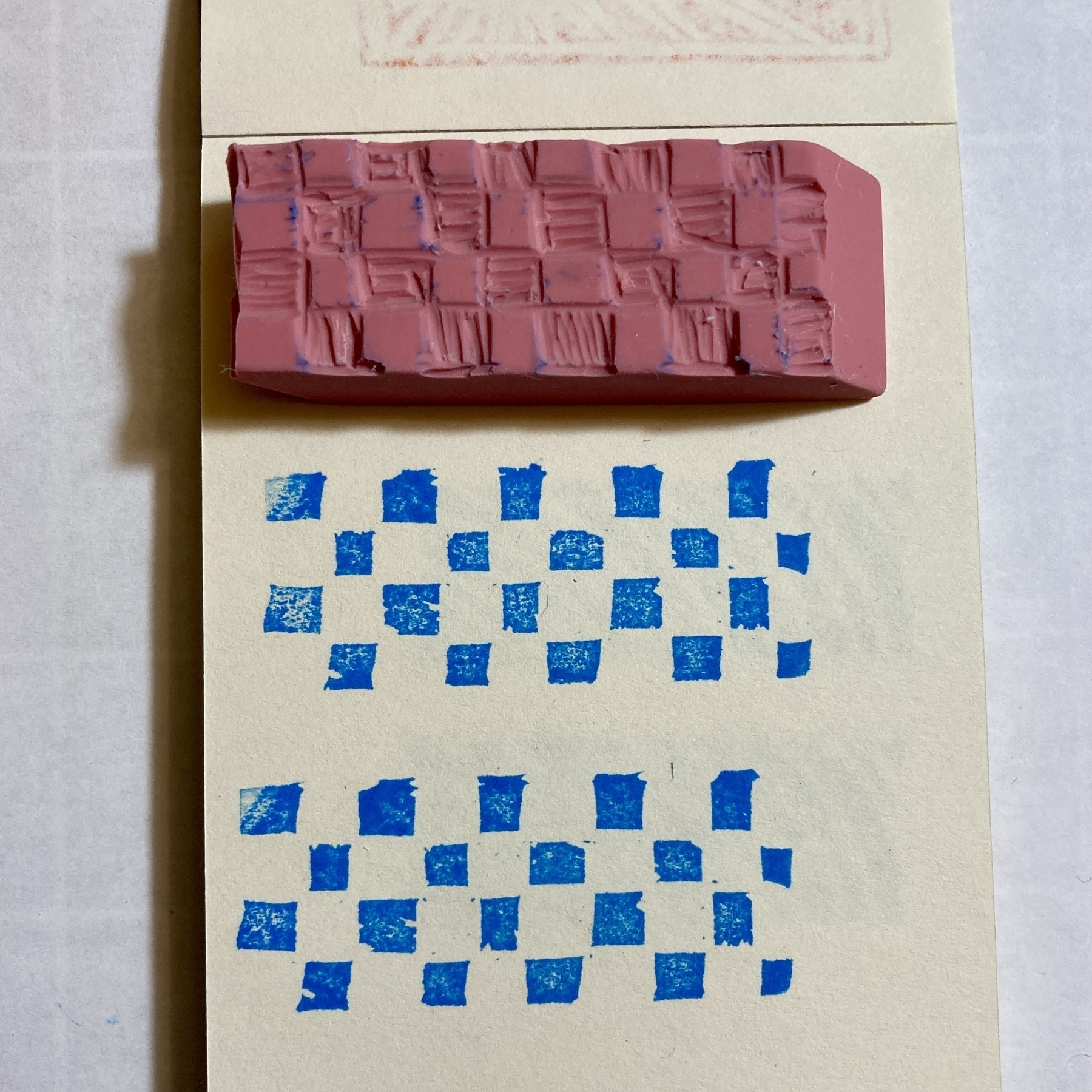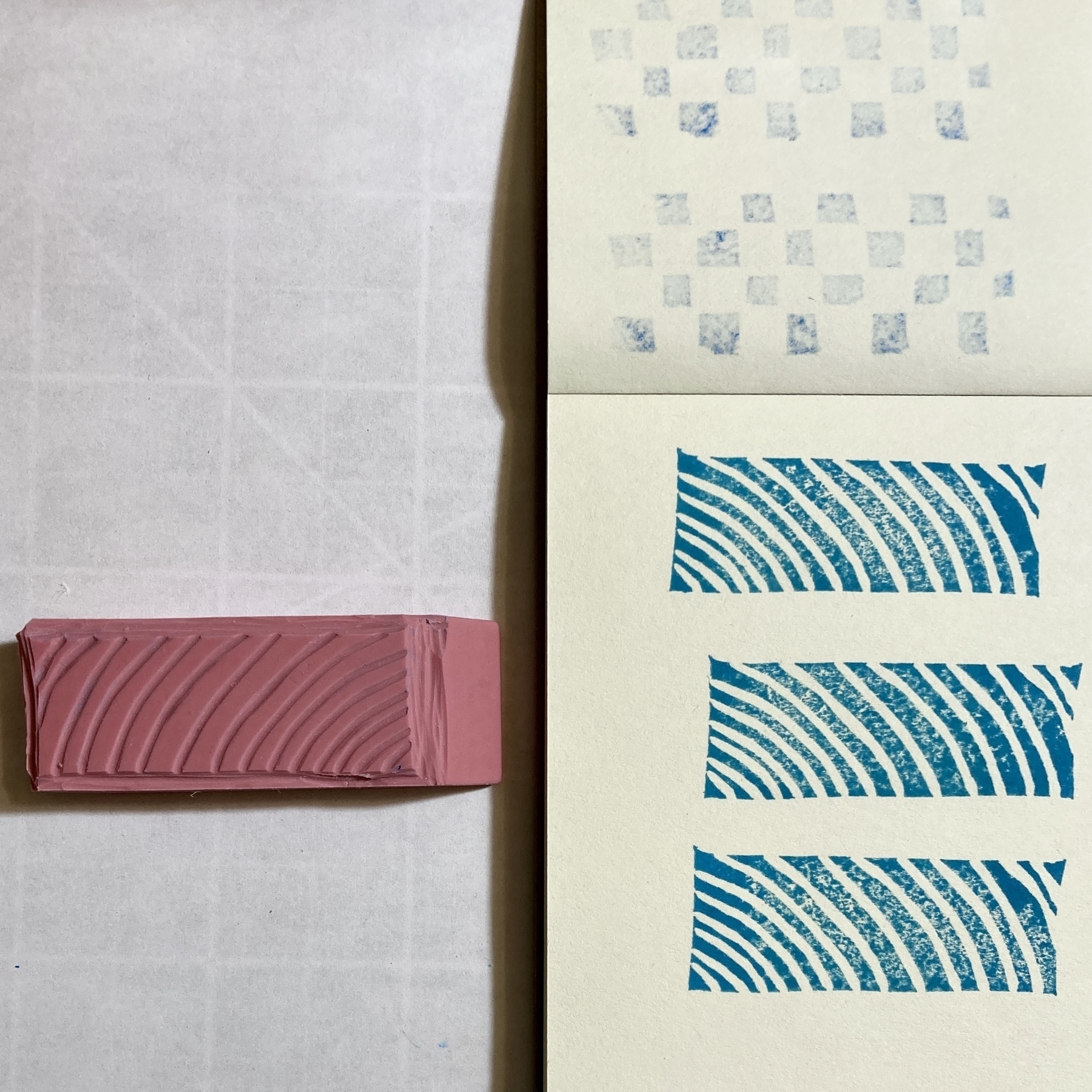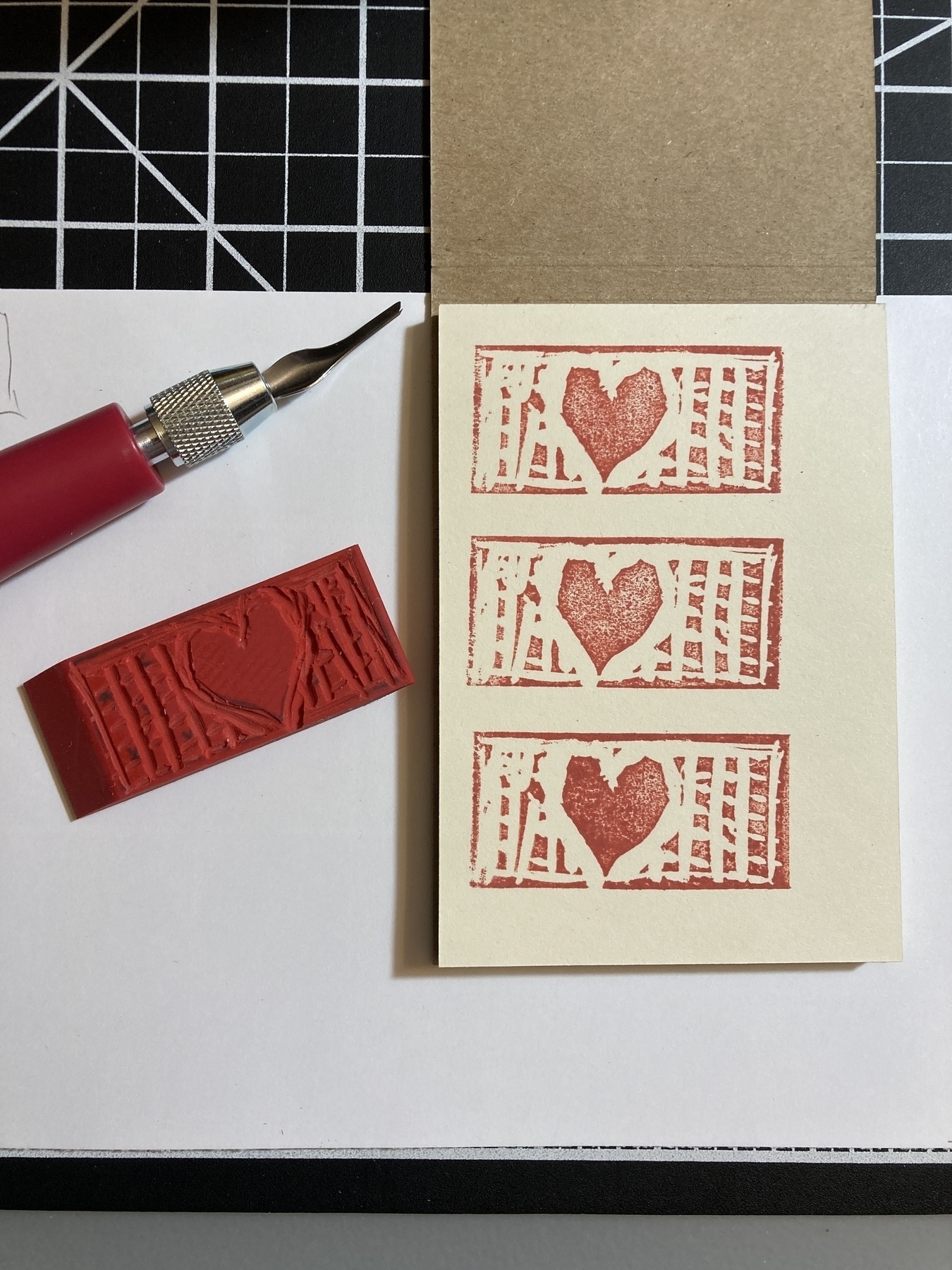I used photo collections in Micro.blog to create a page with my featured zines. Then after the photos, I added links to each zine.
I made a quick page about zine trades. I think so far when people have asked me to trade, it’s been on Instagram. But now I have info in the Fediverse, too. 🙂
Test print process
Here’s what I do for test printing zines, which is the stage in my zine-making process between text and images are done and everything looks good to go.
Step 1
I realize I’m done with writing and visuals. I do a little happy dance (in my head) because the hard part is over.
Test prints are tedious. Folding zines can be tedious. But I don’t consider that hard work. The hard work is going from a blank page to a page that’s covered in Stuff, in the ways you wanted to cover the page with Stuff.
Step 2
I print one copy of the zine on standard copy paper. Plain white, 20lb paper. Nothing fancy. I don’t adjust any settings.
I fold the zine and look at each page. In this step, I’m looking at spacing. Is anything cut off? Anything that needs to be moved a bit? If I have something centered, does it actually look centered on the folded zine?
Next I’ll read through the zine once, front to back. I read out loud so I can hear if a sentence sounds awkward or too long.
I look for spelling and punctuation mistakes.
I mark up edits with a pen, so I know what to adjust when I’m back on my computer.
I should note an important thing: I try not to make edits on paper and on the computer at the same time. I make edits on paper first. Then I go to my computer and make edits to the file.
Step 3
I make edits on the computer, following the notes I marked on paper.
I print another test copy and fold the zine.
This time I’m looking for anything at all that needs to be tweaked. Wording, spacing, alignment.
I read the zine in reverse, back to front, bottom of each page to the top. It’s a tip I picked up in college to help catch mistakes – read your work sentence by sentence, but in reverse. From the end to the beginning.
I mark up changes in pen.
I repeat step 3 as many times as I need to, until I’m happy with everything in the zine.
Step 3.5 (optional)
Sometimes I decide to rewrite at least half the text at this point. The outcome is better writing, a better zine. But ugh, rewrites can feel tedious. Maybe I have to re-do spacing or re-think images I’m using.
I keep telling myself, this will result in a better zine.
Go back to step 3.
Step 4
I print one copy of the zine on the paper I want to use for all the copies. For mini zines, that’s usually 24lb paper. Just a little thicker than standard copy paper, so it feels nicer. Sometimes I bump up to 32lb paper. That feels like a special occasion.
I fold the zine and do a final check that everything looks good.
Then I print copies. I usually make 10-15 copies. I give away some copies to friends. I end up trading a few copies. And I put 5 copies in my Etsy shop.
And then I’m done.
Pretty straightforward process, as long as I don’t get caught in too many rewrites.
Astronaut Food
New zine! “Astronaut Food” is a mini zine about freeze-dried food that astronauts eat in outer space.
The zine includes history about developing food for NASA missions. The back side of the zine (when unfolded) shows vintage Tang ads and a list of sources.
If it’s giving Bill Nye episode, that’s my intent. 😉
I made a collage using space imagery for the background of the zine. All text is typed.
Copies are available in my Etsy shop (U.S. only), and I’m also open to trades.
See below for photos and full text of the zine.
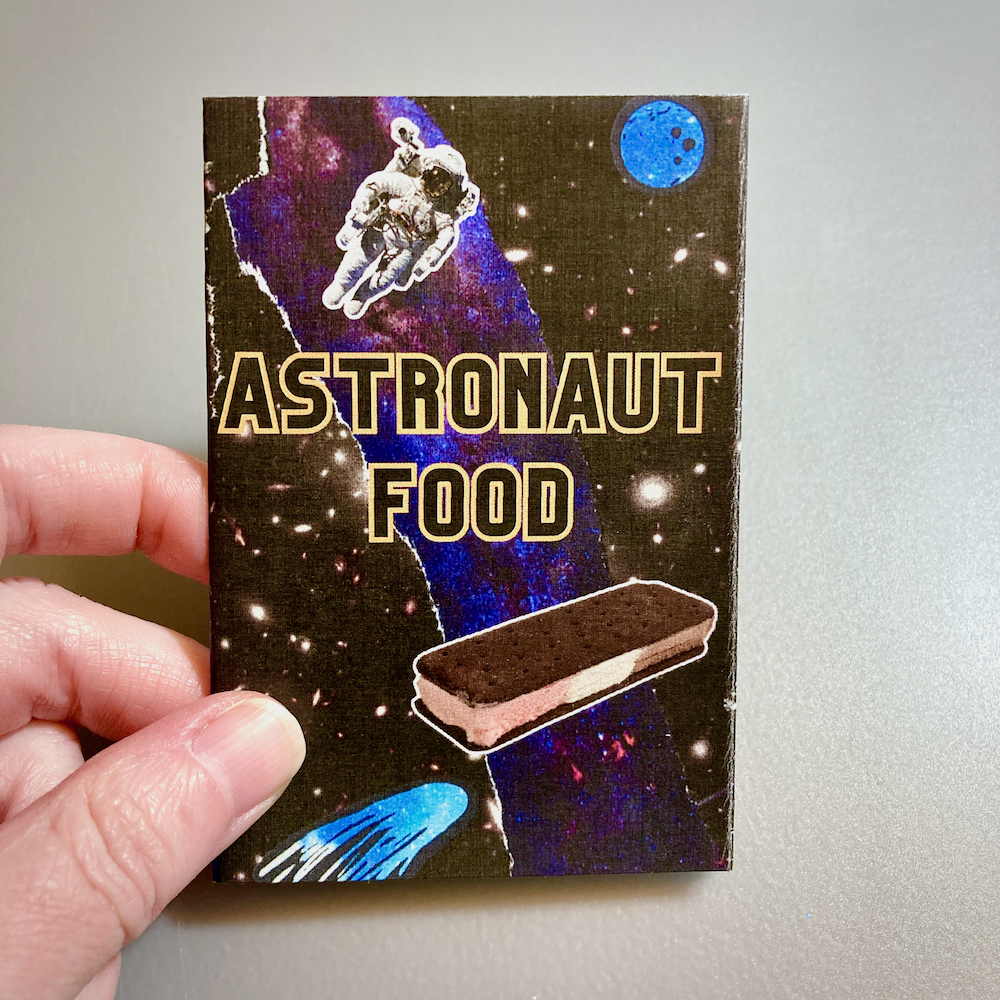
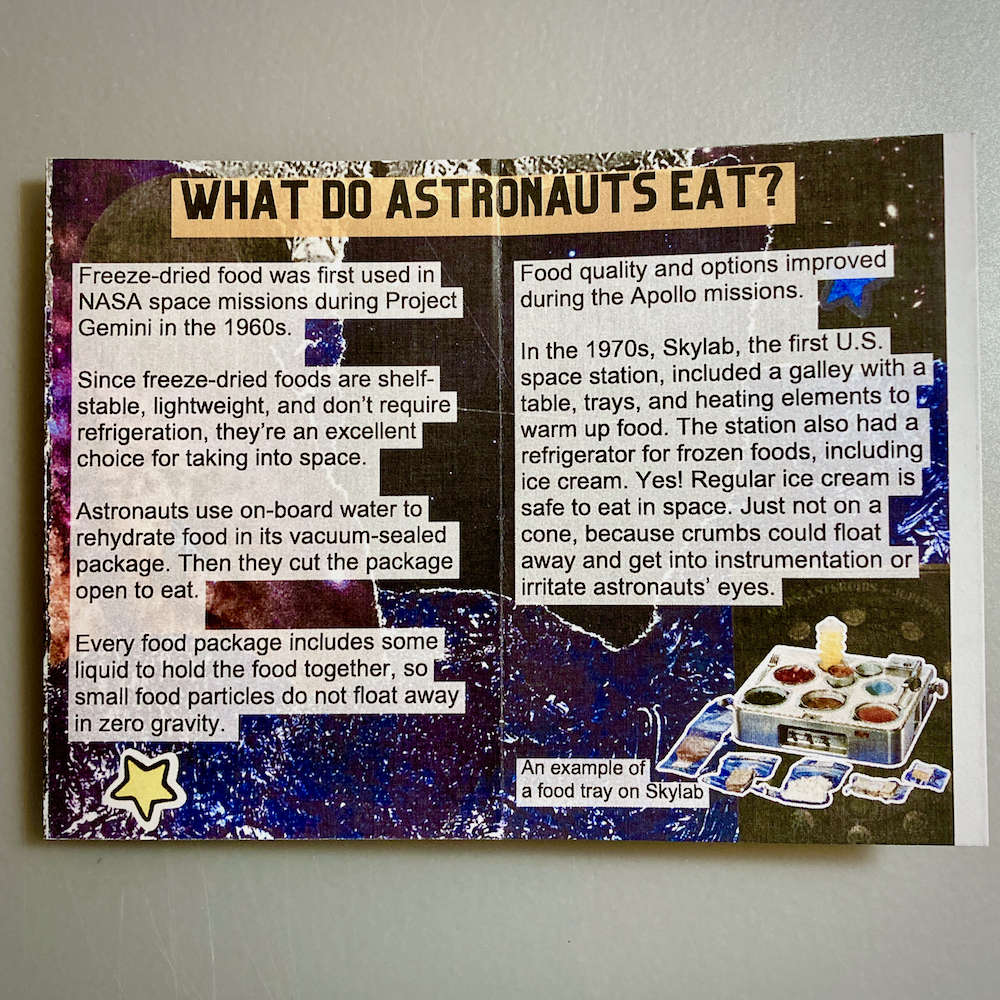
What do astronauts eat?
Freeze-dried food was first used in NASA space missions during Project Gemini in the 1960s.
Since freeze-dried foods are shelf- stable, lightweight, and don’t require refrigeration, they’re an excellent choice for taking into space.
Astronauts use on-board water to rehydrate food in its vacuum-sealed package. Then they cut the package open to eat.
Every food package includes some liquid to hold the food together, so small food particles do not float away in zero gravity.
Food quality and options improved during the Apollo missions.
In the 1970s, Skylab, the first U.S. space station, included a galley with a table, trays, and heating elements to warm up food. The station also had a refrigerator for frozen foods, including ice cream. Yes! Regular ice cream is safe to eat in space. Just not on a cone, because crumbs could float away and get into instrumentation or irritate astronauts’ eyes.
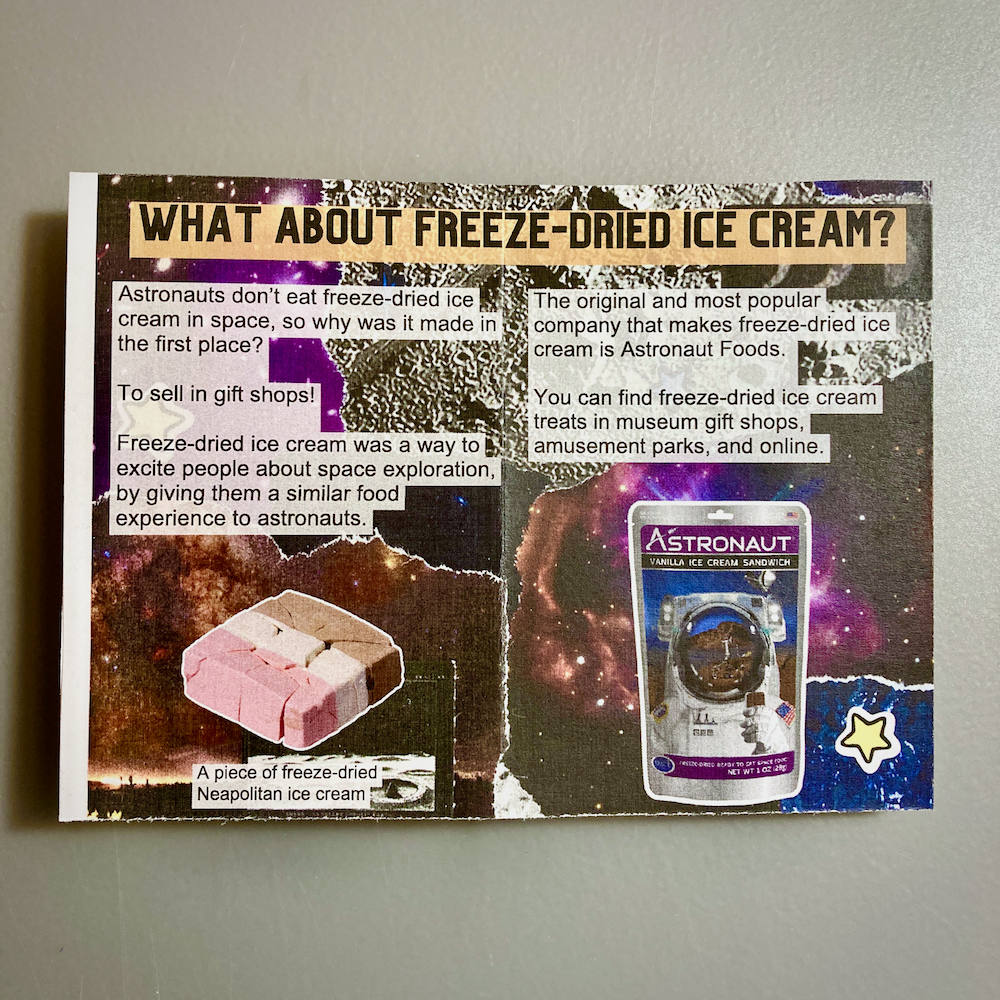
What about freeze-dried ice cream?
Astronauts don’t eat freeze-dried ice cream in space, so why was it made in the first place?
To sell in gift shops!
Freeze-dried ice cream was a way to excite people about space exploration, by giving them a similar food experience to astronauts.
The original and most popular company that makes freeze-dried ice cream is Astronaut Foods.
You can find freeze-dried ice cream treats in museum gift shops, amusement parks, and online.
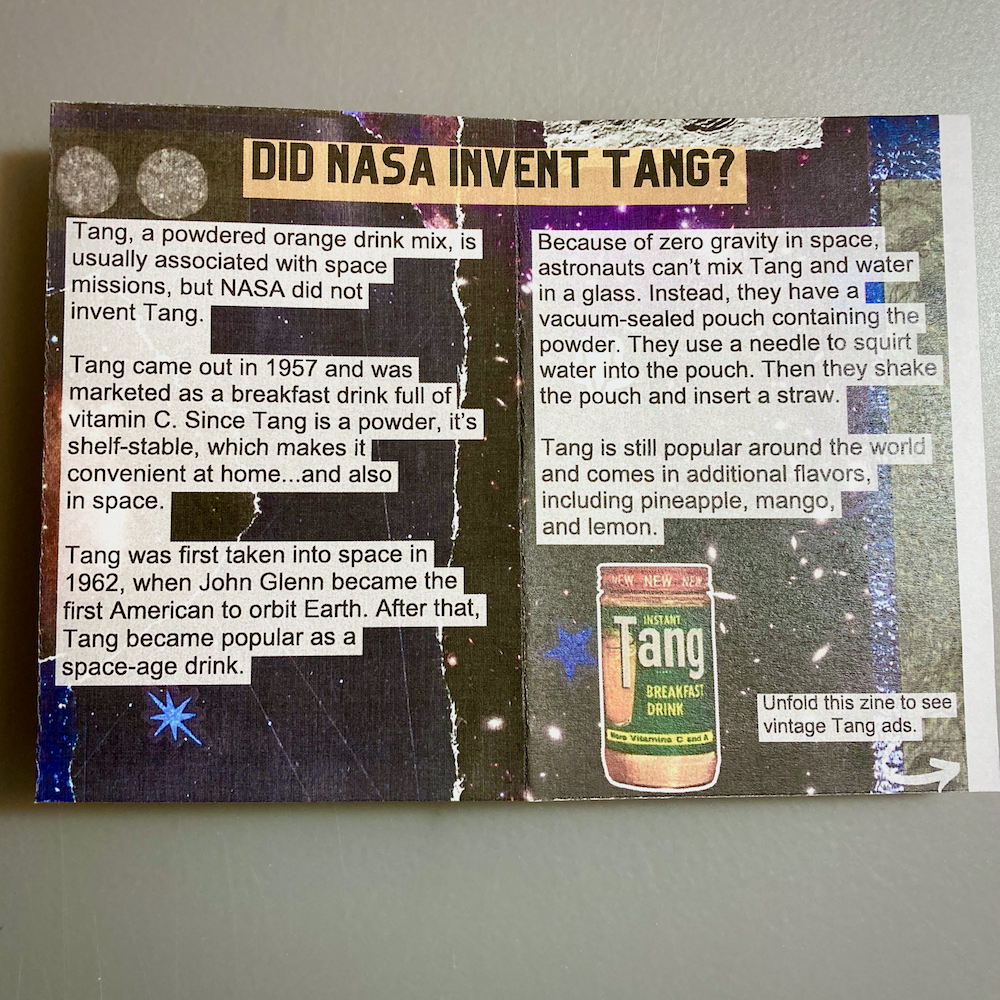
Did NASA invent Tang?
Tang, a powdered orange drink mix, is usually associated with space missions, but NASA did not invent Tang.
Tang came out in 1957 and was marketed as a breakfast drink full of vitamin C. Since Tang is a powder, it’s shelf-stable, which makes it convenient at home…and also in space.
Tang was first taken into space in 1962, when John Glenn became the first American to orbit Earth. After that, Tang became popular as a space-age drink.
Because of zero gravity in space, astronauts can’t mix Tang and water in a glass. Instead, they have a vacuum-sealed pouch containing the powder. They use a needle to squirt water into the pouch. Then they shake the pouch and insert a straw.
Tang is still popular around the world and comes in additional flavors, including pineapple, mango, and lemon.
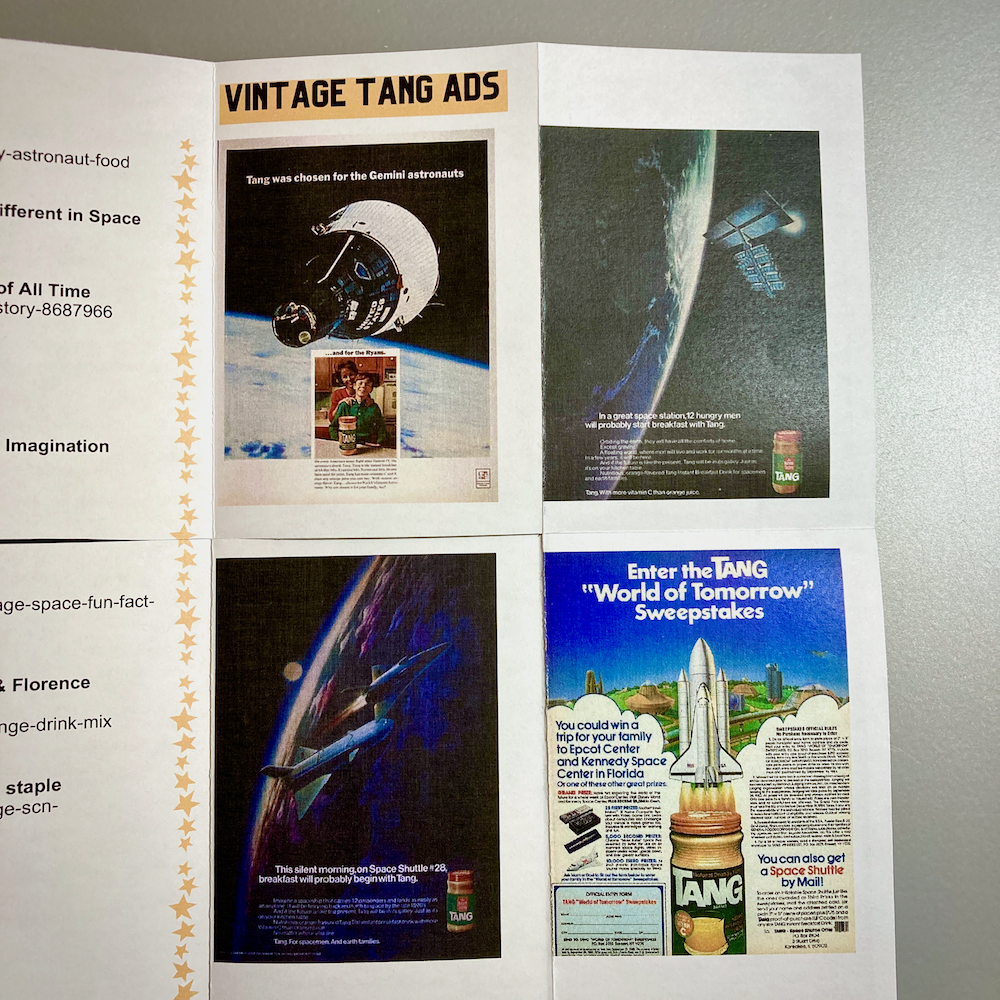
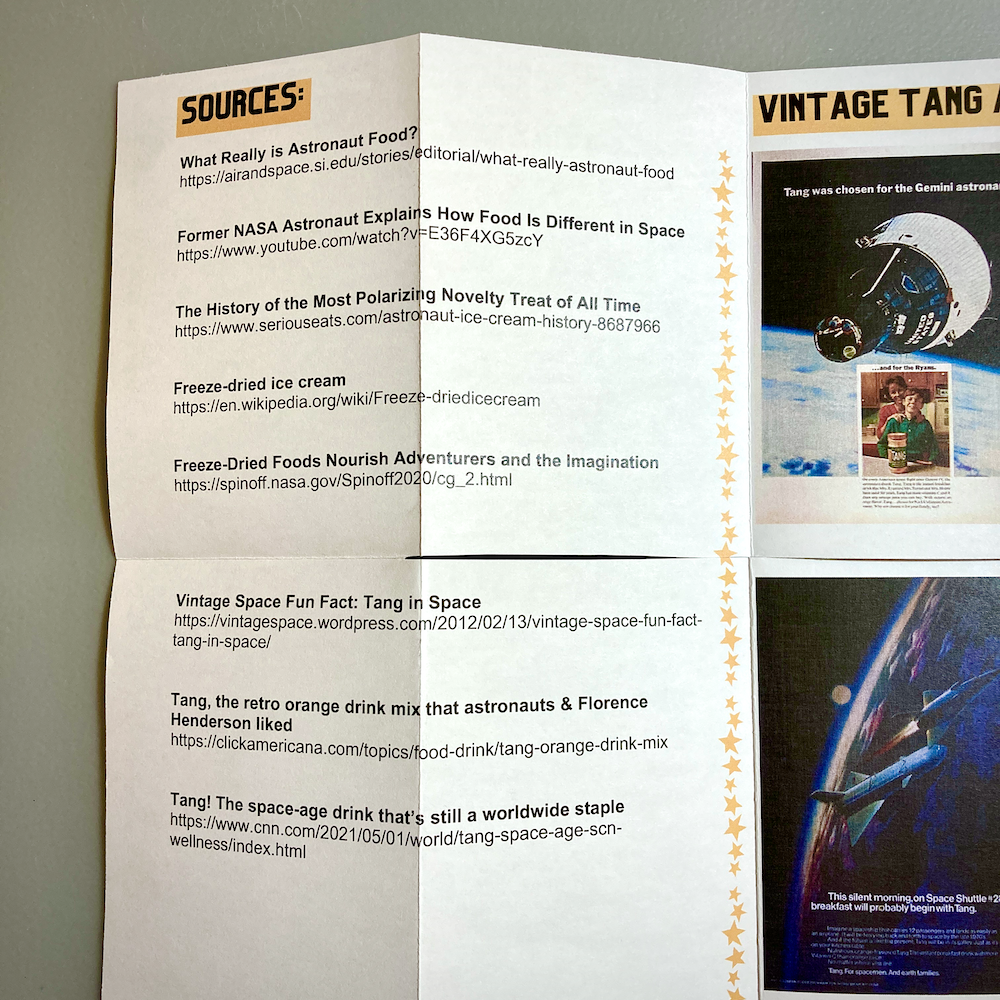
Sources
What Really is Astronaut Food?
Former NASA Astronaut Explains How Food Is Different in Space
The History of the Most Polarizing Novelty Treat of All Time
Freeze-Dried Foods Nourish Adventurers and the Imagination
Vintage Space Fun Fact: Tang in Space
Tang, the retro orange drink mix that astronauts & Florence Henderson liked
Update on my slash pages
I had some slash pages here on Mythical Type and some on kalikambo. Some pages were duplicated between sites and some pages were different.
It was confusing to me, so I made one set of slash pages on kalikambo, and I removed the duplicated slash pages on Mythical Type.
There’s still a navigation link to Slashes at the top of this site. That redirects you to my slash page index on kalikambo.
Spaced Out is now available in a digital format! You can download the zine as a PDF on Ko-fi.
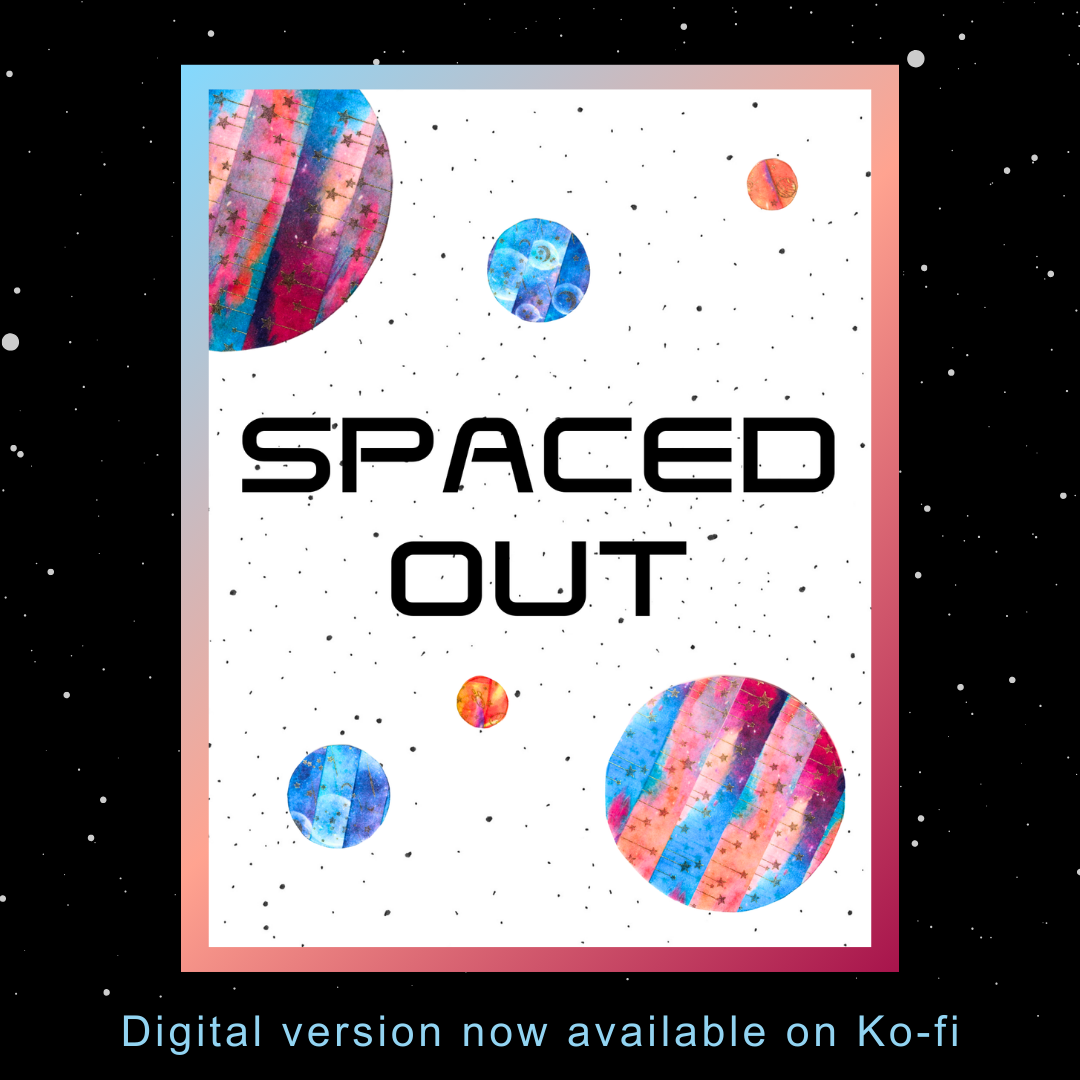
2024 zine recap
I make zines for fun, and I want zines to be primarily for fun, so I don’t set specific goals each year. Even so, I’m really happy with what I accomplished in the past year!
Here’s a rundown of zine-related things I did in 2024.
Zines I made
I made 10 zines!
Mini zines:
- Useless Venn diagrams
- The antidote to social media
- So You Met Your Past Self
- How to make a mini zine
- What’s a zine?
- Left-brained art
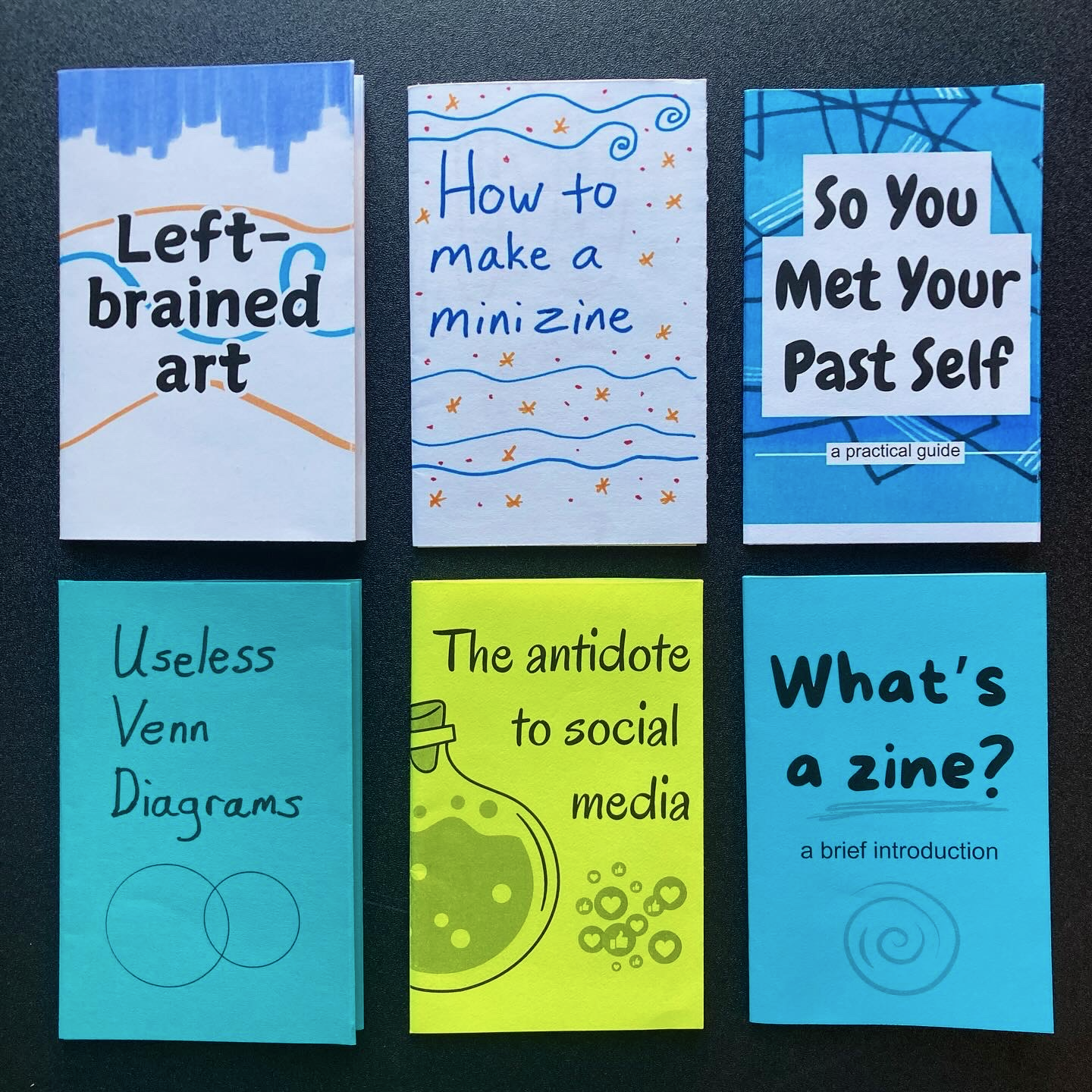
Quater-page zines:
Contributor zines (that I organized):
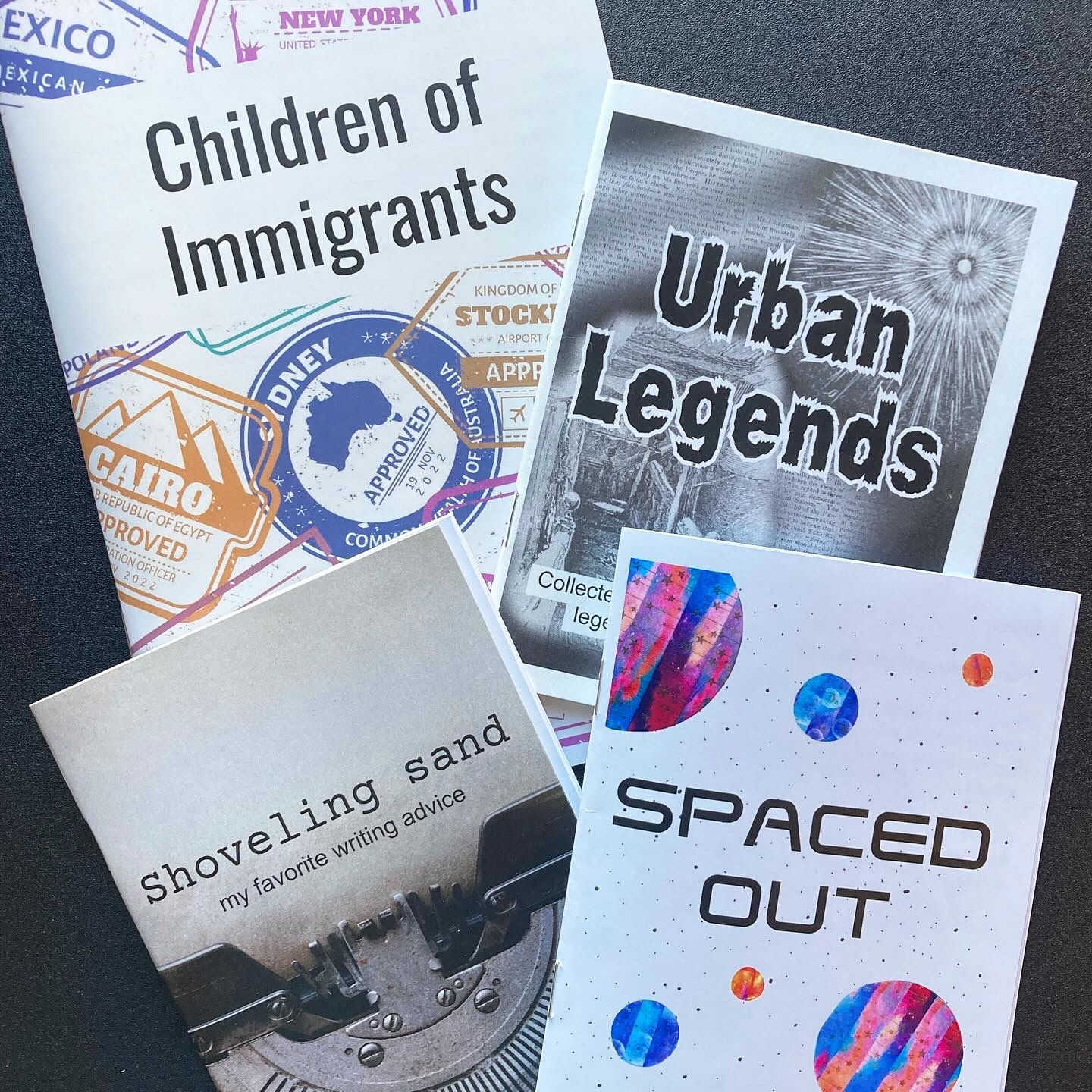
Zine contributions
I contributed pages to these zines:
Events
- Local zine fest - I was a vendor, and I taught a workshop on making mini zines.
- Fall Fest at a local library - I led a zine-making station.
- Local creative studio - I taught a workshop on making zines.
- Local college - I spoke to a graphic design class about making zines.
- Two zine hangouts at local spots - These were great events to spend time making zines with people. Very casual hangouts.
Collage zines I made at events
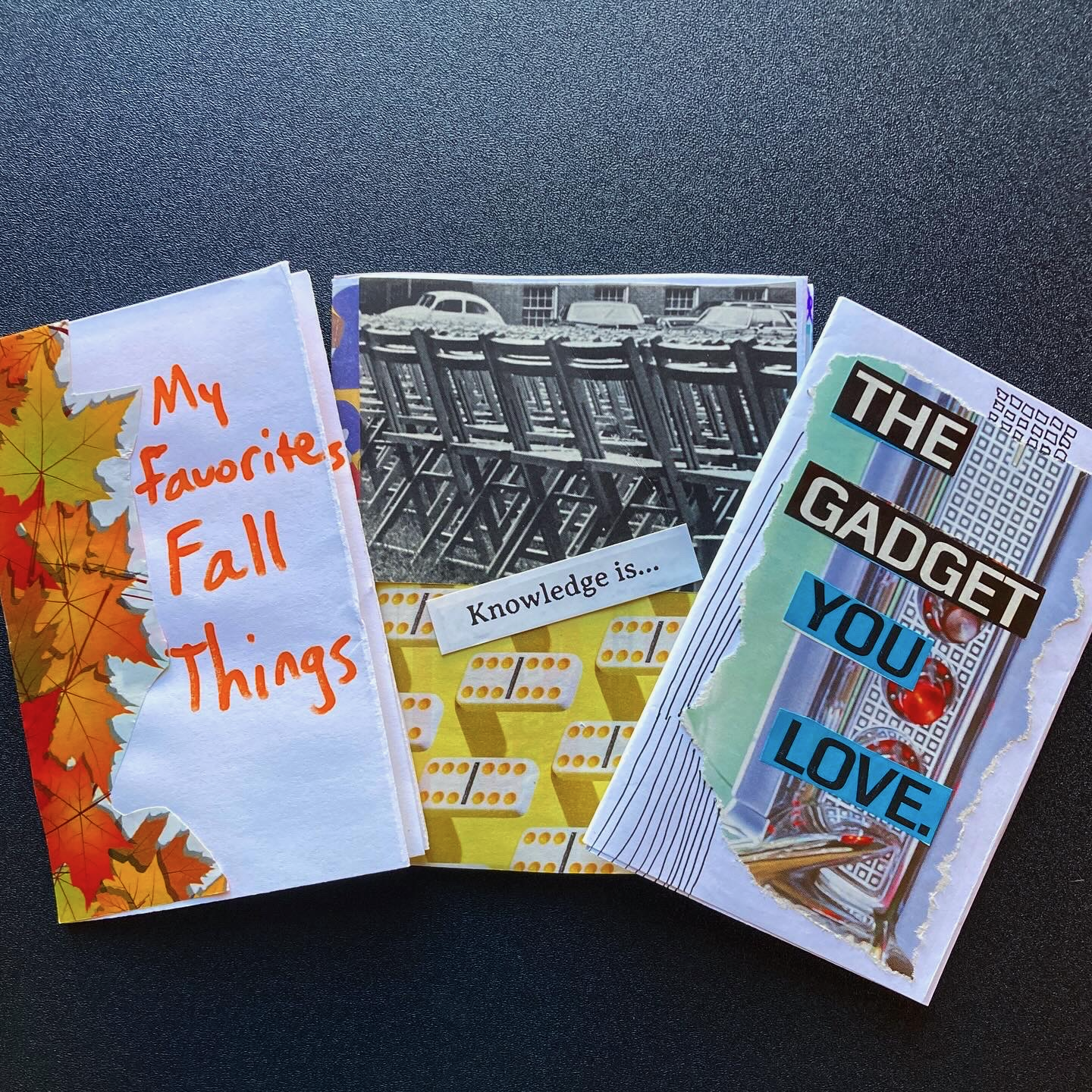
Miscelleanous
I joined the zine line of the Smallweb Subway. This is a webring themed after subway systems.
Not a zine, but collaboration with a zine friend. I submitted a short story to a podcast, VLASINDA’s Desolate Library.
I’m looking forward to making more zines and continuing to connect with people in 2025!


